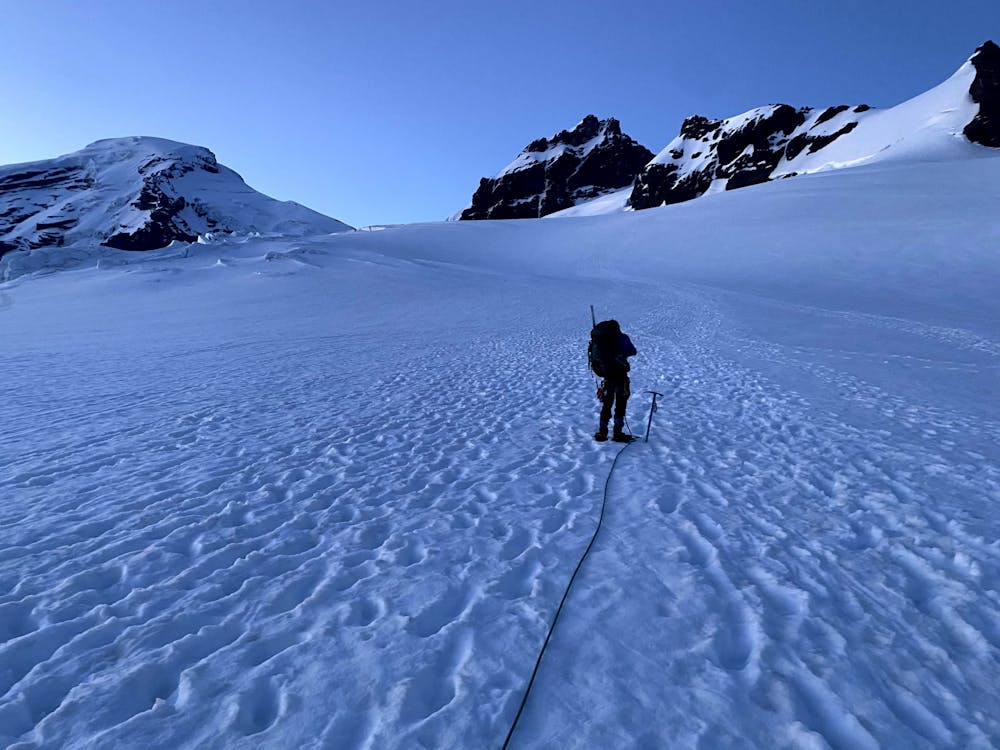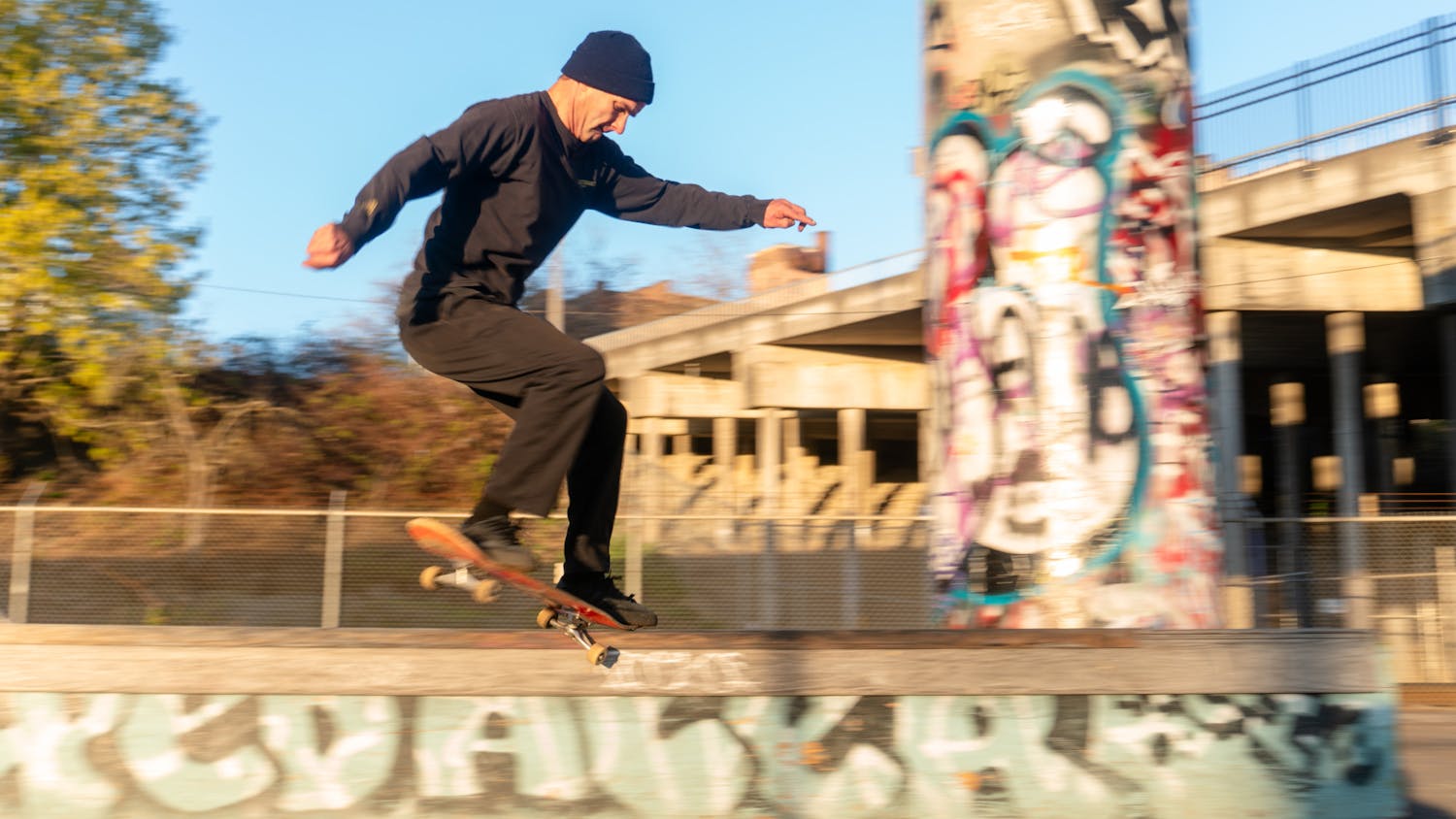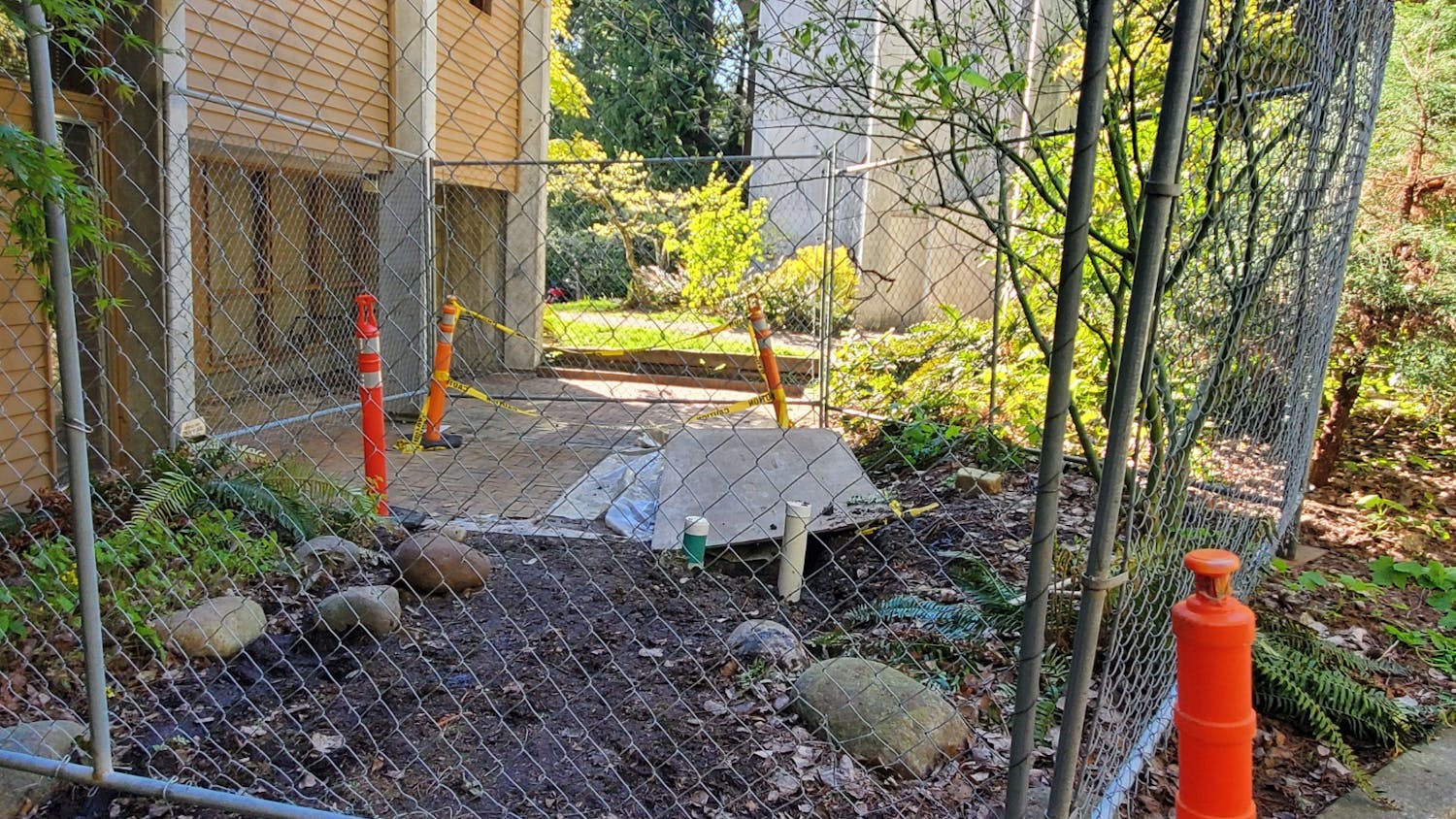One iconic monument stands above the rest throughout Whatcom County’s section of the Cascades: Mount Baker.
This formidable peak is the third highest in Washington state behind Mount Adams and Mount Rainier – it is also an integral part of recreation in the county. Every year, many people attempt to summit the mountain.
Tom Kirby is the assistant director for IT and marketing and a guide with the American Alpine Institute. He is familiar with Mount Baker, having climbed the mountain 12 times.
“It's just a very rich experience, especially if you've never been on a volcano before,” Kirby said. “Even before you get to the summit, this whole new expansive terrain opens up to you and it's a pretty awe-inspiring moment.”
Mount Baker is otherwise known as Koma Kulshan, which according to the U.S. Forest Service means "Great White Watcher.”
The mountain stands at 10,781 feet and is an active volcano. Its most recent eruption was over 6,700 years ago, according to the United States Geological Survey.
The skills and knowledge climbers need to summit mountains such as Mount Baker are obtained through various methods and organizations, such as the American Alpine Institute. The AAI offers courses aimed at teaching people the basics of mountain climbing.
Many climbers are introduced to the skills they need through climbing clubs as well.
This was not the case for Western Washington University student Cole Fulton, who said he taught himself how to climb through textbook guides such as “Freedom of the Hills”.
Climbers must be familiar with equipment including ice axes and crampons – spikes that attach to a shoe to improve traction in snow – as well as rope harness systems, Fulton said.
They must also be familiar with techniques for crevasse rescue, a necessary skill when climbing the glaciers that make up most of the ascent.
“You really have two major hazards on these kinds of mountaineering-oriented routes,” Jason Martin said. “The hazards are falling into the mountain and falling off the mountain.”
Martin is the executive director of the AAI, an experienced mountain rescue volunteer, and author of climbing guides who has summited Mount Baker 50 times.

A sunny view of Mount Baker from Ptarmigan Ridge on July 24, 2022. Mount Baker has numerous different climbing approaches including routes off of this trail near Artist Point. // Photo by Will Story
Most rescues from the upper part of the mountain are facilitated by the U.S. Navy with helicopters, Martin said. Yet, if the conditions are treacherous, then Mountain Rescue teams will go in to search.
“There's some kind of a rescue on the mountain, maybe once every two or three weeks,” Martin said.
The American Alpine Club documents climbing accidents, analyzing them to figure out what went wrong.
Their archives contain numerous articles with examples of these accidents such as one on a climb from May 20, 1974, when climber Stephen Esses died from the freezing conditions while trying to ascend Mt. Baker via the Coleman Glacier.
“This death raises the question of the exact responsibilities of the leader/instructor toward the party members, and those of the members toward the leader/instructor,” the article stated.
More recent examples include a climb on May 20, 2019, when a climber was injured from a fall while trying to ascend Mt. Baker via the Squak Glacier.
The article explains how a climber “Suffered numerous injuries, including a puncture wound and fractured lower jaw from his ice axe, three fractured ribs, and a fractured wrist” after falling into a 4-foot crevasse.
The publication concludes the injuries could have been prevented or mitigated through the proper use of protective equipment.
There are a few different routes used to approach climbing Baker, each with risks and challenges.
Some of the most popular of these include the Coleman Deming, Heliotrope Ridge and Easton Glacier routes. The mountain is open to climbers year-round with the most popular season being from June to August.
(Photo 2)
Most climbers complete the climb over a couple of days by first moving up to a base camp, then to the summit on the following morning, Martin said.
At the top of the mountain, a small piece of land called Grant Peak sticks up slightly above the glacier below, according to Kirby.
This peak is the true summit of Baker.
“If the weather is clear, you know you can see quite far,” Martin said. “Sometimes you get up there and most of the range is in the fog so all you can see are a couple of peaks above the fog down below.”
Glacier Creek road, the main forest service road used to access climbing, approaches on the mountain’s north side including the Coleman Deming and Heliotrope Ridge routes. The road was washed out over the winter and is closed according to the U.S. Forest Service.
“Anyone who's got physical fitness, a desire to learn and motivation to try it should try climbing,” Fulton said.
Will Story (he/him) is a city reporter with The Front this quarter. He is majoring in visual journalism and hoping to minor in photography. At The Front he’s focused on covering city news, events, and how Bellingham is changing. You might find him getting Turkish coffee at Ashuri or exploring the trails of Whatcom county with a camera.
You can reach him at willstory.thefront@gmail.com or on Instagram at @thatwillstory






